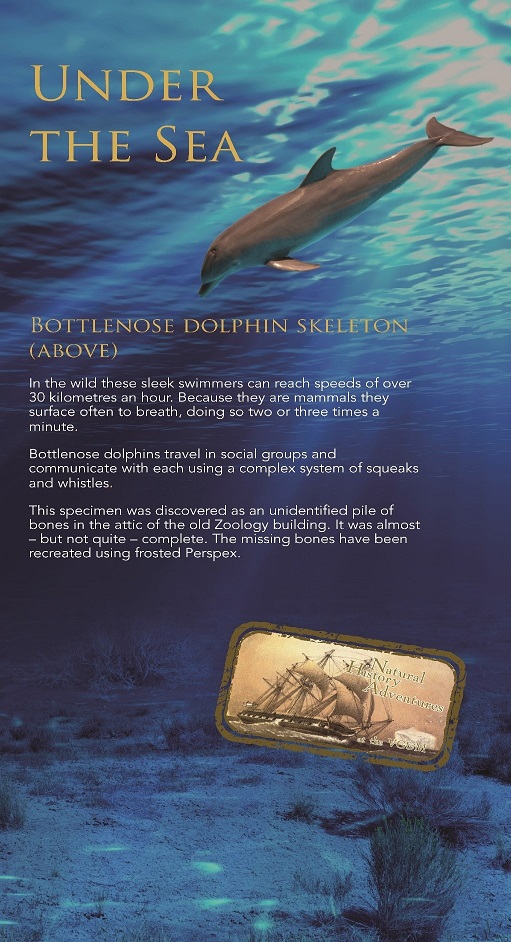Under the Sea – Object highlights
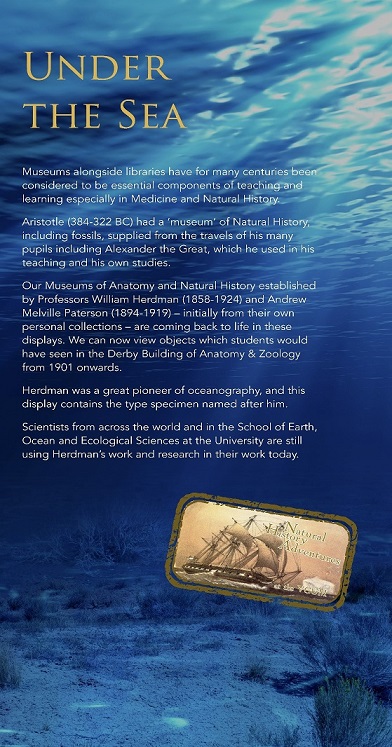
William Herdman became the first holder of the Derby Chair of Natural History at Liverpool University College in 1881 (later to become the University of Liverpool). In 1885 he founded the Liverpool Marine Biological Committee to study the Irish Sea and was the British pioneer of aquaculture. He was widely known as a great marine zoologist and oceanographer and devoted much time to scientific research and the fishing industry.
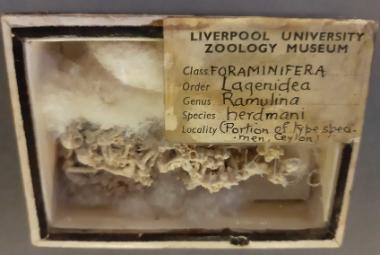
The steam yacht called Ladybird was the University’s first research boat and a lot of the displays within these cases were collected by Professor Herdman and his team - we even have the type specimen that was named after him in the photograph above.
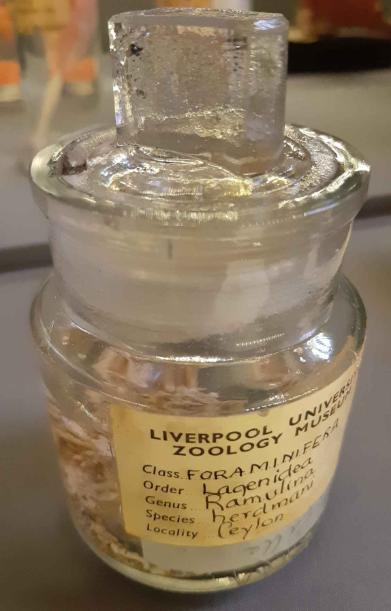
It is part of the type specimen* of the marine invertebrate Rhabdocynthia ceylonica – first described by Herdman in 1902 during his work in Ceylon (Sri Lanka), and subsequently named after him.
* the specimen that was originally used to name a species or subspecies or that was later designated as the basis for that name
Under the Sea Highlights of the Display
Coral Bleaching
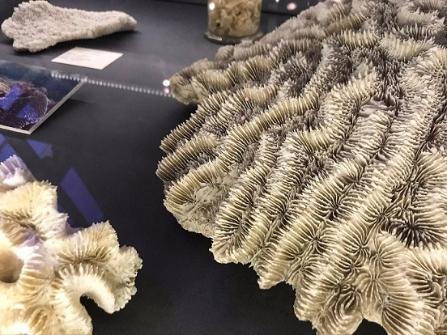
The corals in our display are no longer living and are bleached of their original colour. They are a timely reminder of the importance of coral reefs to our environment as well as an insight into the human impact on underwater ecosystems.
Corals are living marine invertebrates that attach themselves to rocks and some types build a hard skeleton. On the reef, they provide shelter for animals and a base for other creatures to grow on. Warmer water temperatures can result in coral bleaching. When water is too warm, corals will expel the algae (zooxanthellae) living in their tissues causing the coral to turn completely white. This is called coral bleaching. When coral bleach, it is not dead. Corals can survive a bleaching event, but they are under more stress and are subject to mortality.
Climate change is increasing ocean temperatures and causing many coral reefs to become bleached. Other factors which may cause bleaching include; exposure to low tides, overexposure to sunlight and pollution. In 2016, bleaching of coral on the Great Barrier Reef killed between 29 and 50 percent of the reef's coral. Many marine species depend on the reefs for shelter and protection from predators, the extinction of the reefs would ultimately create a domino effect that would trickle down to human societies that depend on those fish for food and livelihood. Coral reefs also act as a protective barrier for coastlines by reducing wave impact, which lowers the damage from storms, erosions, and flooding.
Fan Coral
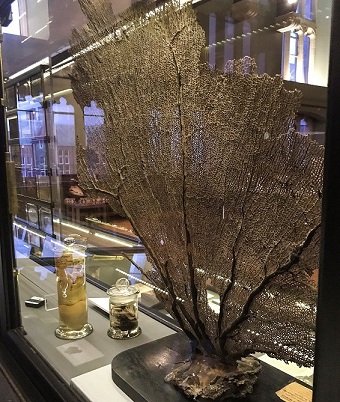
There are over 1200 known species of Gorgonians. Sea fans are found in South Atlantic, Indo-Pacific, West Indies and also in Malay Archipelago, Bermuda and Bahamas; mainly inhabit tropical and subtropical waters on coral reefs. Their dried skeletons are used as ornaments. The tropical Gorgonians were introduced into the saltwater aquarium trade in 1970, and specimens from the Caribbean were introduced in the 1980's.
Sea shells, sea shells on the sea shore…
Charonia tritonis
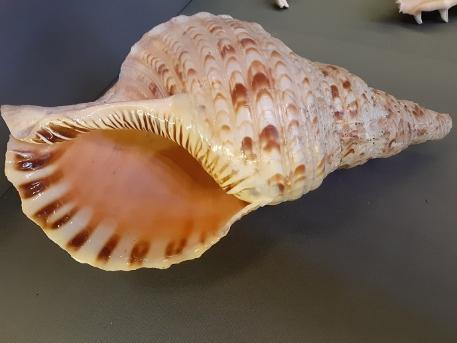
This Charonia tritonis is known by its common name as Tritons Trumpet or giant triton. It is a very large sea snail and can reach up to 2 ft (60 cm). It is one of the biggest shells found on coral reefs and is inhabited by a gastropod mollusc.
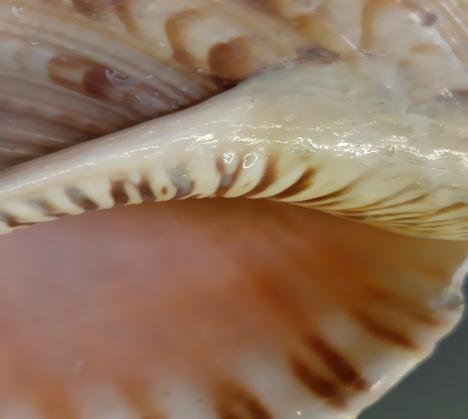
They have not been evaluated by IUCN but they are thought to be overexploited for trade most likely for ornamental purposes. Conch shells have been used in Japan for many centuries as trumpets called “Horagai”and during warfare, the samurai used conch shells as a signalling device.
Nautilus
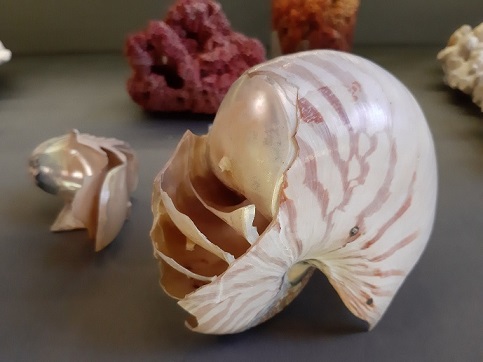
Nautiluses have changed so little from their 350-million-year-old ancestors. Inhabited by a cephalopod (in the same Class as squid, octopus and cuttlefish). They swim in the water column using jet power by inhaling water through a siphon and expelling it under pressure.
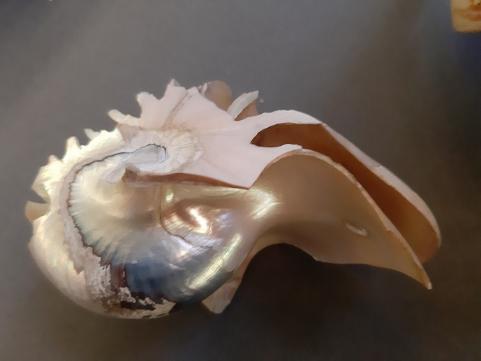
Naturalists have long marvelled at its shell. In Florence, the Medicis turned the pearly shells into ornate cups and pitchers adorned with gold and rubies. They were once some of the largest sea predators, but now need protection from humans. Marine biologists estimate millions of nautili are being killed to satisfy the worldwide demand of jewellery and ornaments derived from the lustrous shell.
Lastly don’t forget to look up! Or you will miss our bottlenose dolphin skeleton above you, on a windy day it may give you a wave!
